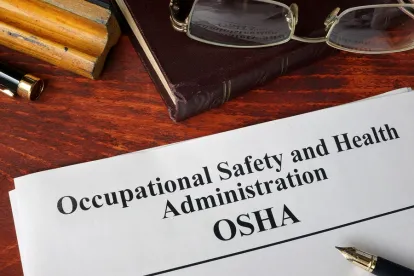On January 17, 2017, the outgoing administration left one last gift for the Process Safety Management (PSM) community: a new national emphasis inspection program. As the compliance directive notes, “Any violation of the PSM standard is a condition that is likely to cause death or serious physical harm.” Given the Occupational Safety and Health Administration’s (OSHA) recent enforcement requiring flawless piping and instrumentation diagrams, as well as operating procedures, under the guise that documents must be “accurate,” even typographical errors can result in serious violations with penalties reaching $12,675 per violation.
The “Who”
Long anticipated, the new Chemical National Emphasis Program (NEP) is an expansion of the prior program. For starters, refineries will be included in the new program. In addition, OSHA intends to include Environmental Protection Agency (EPA) Risk Management Plan (RMP) Program 1 and Program 2 facilities despite the fact that most, if not all, facilities subject to OSHA’s PSM Standard fall into the Program 3 category (see 40 C.F.R. Part 68.10(d)(2)). OSHA also intends to give emphasis to facilities that have been previously cited for PSM violations during the period of January 1, 2000, through September 30, 2015.
Potential targets will be grouped into four categories: (1) employers whose principal highly hazardous chemical is anhydrous ammonia; (2) refiners; (3) chemical manufacturers; and (4) all others. Each year, OSHA’s national office intends to create a target list of facilities to be inspected within each OSHA Region. Within each region, the breakdown for non-refinery, programmed inspections will be as follows:
Category 1 facilities will comprise roughly 25 percent;
Category 3 facilities will comprise 45 percent;
Category 4 facilities will comprise the remaining 30 percent.
For refinery inspections, OSHA intends to set a national goal each year. This goal will then be distributed across the regional offices according to each region’s relative contribution to the total number of refineries nationwide. For example, if OSHA intends to conduct 30 programmed refinery inspections in 2018 and Region 6 contains 30 percent of the operational refineries, then nine refineries within Region 6 will be inspected in 2018.
Facilities that had previous Chemical NEP inspections within the three years prior to the “new” inspection program will be removed from the list of potential targets.
The “What”
Prior to the inspection, compliance officers are to review a facility’s RMP submission with particular attention given to any RMP reportable accidents and the Offsite Consequence Analysis. Compliance officers are also expected to review all available OSHA inspection history and related abatement for any PSM citations issued within the previous six years to determine whether a hazard still exists.
Compliance officers will be provided a dynamic list of questions to utilize during the inspection. When warranted, prior NEP questions from both the Refinery NEP and Chemical NEP may be used, as well as the 40-plus pages of questions found in the Center for Chemical Process Safety’s publication, Guidelines for Hazard Evaluation Procedures, 3ed.
Also provided is a list of documents to be reviewed, including an instruction to review the design codes and standards employed for both the equipment in a selected unit and the process itself, despite the fact that the PSM Standard only requires that this information be maintained for equipment in the process, not the overall process design (see 1910.119(d)(3)(i)(F), 1910.119 (d)(3)(iii)).
During the inspection, compliance officers are to inspect both the host employer and the contractors on site. If a selected unit at the facility does not have any contract employees working within the selected unit or nearby the select unit, “then the team leader needs to choose an additional PSM-covered process where contractors are known to be working, and inspect those contractors.”
The “Why”
OSHA states that since 2010, it initiated 69 significant enforcement actions (cases involving fines in excess of $100,000 under the now archived Enhanced Enforcement Program) against chemical facility employers inspected under the Chemical NEP. In addition, OSHA initiated 24 significant enforcement actions against petroleum refinery employers. OSHA seems to suggest that this data highlights a continuing need for a PSM-focused enforcement program. A more skeptical view is that the new Chemical NEP is designed to provide OSHA with the data necessary to support its proposed changes to the PSM Standard.
Regardless of OSHA’s motivation, employers should pay attention as inspections may result in not just OSHA issues, but environmental issues, too, as the national office is encouraging inspection findings to be shared with local EPA RMP coordinators as well. While the new sheriff may no longer be in town, with this new Chemical NEP it is clear that all his deputies stayed.




 />i
/>i

